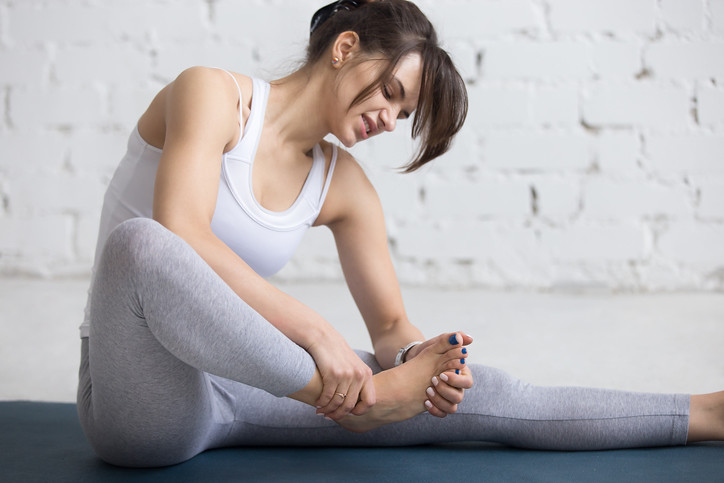Pilates is a fantastic exercise method known for its ability to strengthen the core, improve flexibility, and enhance overall well-being. However, like any physical activity, it’s essential to be aware of potential risks. In this comprehensive guide, we’ll explore the most common injuries associated with Pilates and provide tips on how to prevent them, ensuring a safe and effective practice.
1. Strains and Sprains
Injury:
Muscle strains or ligament sprains are among the most common Pilates injuries. These can occur when muscles and ligaments are stretched beyond their capacity, leading to pain, swelling, and limited range of motion.
Prevention:
- Start with beginner-level Pilates exercises and gradually progress to more challenging ones.
- Focus on proper form and technique during every movement.
- Listen to your body; if you feel pain, stop the exercise immediately.
2. Back Pain
Injury:
Back pain can occur when improper technique or excessive strain is placed on the lower back during Pilates movements. This can lead to muscle spasms and discomfort.
Prevention:
- Engage your core muscles to support your lower back during exercises.
- Maintain proper spinal alignment and avoid overarching or rounding your back.
- Choose appropriate exercises and modify as needed, especially if you have a history of back issues.
3. Overuse Injuries
Injury:
Overuse injuries, like tendinitis or bursitis, can develop when specific muscle groups or joints are repeatedly stressed. For instance, overuse of the wrist in exercises like the Hundred can lead to wrist pain.
Prevention:
- Diversify your Pilates routine to avoid excessive strain on a single body part.
- Use proper padding or support to minimize stress on vulnerable areas.
- If you experience persistent pain, consult a healthcare professional.
4. Neck Strain
Injury:
Neck strain can occur during exercises that involve neck flexion or rotation, such as the Roll-Up. Poor neck positioning can lead to discomfort and muscle tension.
Prevention:
- Maintain proper neck alignment by gently tucking your chin during exercises.
- Use neck support, like a small pillow, if needed to reduce strain.
- Gradually progress to neck-intensive exercises as you build strength and flexibility.
5. Shoulder Injuries
Injury:
Shoulder injuries, such as rotator cuff strains or impingement, can result from improper shoulder alignment or excessive strain during exercises like the Shoulder Bridge.
Prevention:
- Pay attention to shoulder positioning and avoid shrugging or hunching.
- Modify exercises that cause discomfort and gradually build shoulder strength.
- Focus on exercises that improve shoulder stability and mobility.
6. Hip Strain
Injury:
Hip strain can occur if exercises are performed with poor hip alignment or if there’s excessive strain on the hip joints, particularly during leg lifts and hip circles.
Prevention:
- Maintain proper hip alignment and engage the core to support the hips.
- Use appropriate padding or support if you experience hip discomfort.
- Start with gentler exercises and gradually progress to more challenging ones.
7. Knee Pain
Injury:
Knee pain can develop if exercises are performed with improper knee alignment or if there’s excessive pressure on the knee joints during movements like the Pilates Plie Squat.
Prevention:
- Focus on proper knee alignment, ensuring they track over your toes.
- Modify exercises that cause knee pain and avoid overloading the knees.
- Strengthen the muscles around the knee joint to provide better support.
8. Foot and Ankle Injuries
Injury: Pilates exercises that involve standing or pointe work can lead to foot and ankle injuries, including strains, sprains, or plantar fasciitis.
Prevention:
- Ensure proper foot positioning and weight distribution during exercises.
- Choose supportive footwear for standing Pilates exercises.
- Pay attention to the condition of your feet and ankles and consult a healthcare professional if you experience persistent pain.
9. Ribcage Injuries
Injury:
Ribcage injuries, such as bruised or strained ribs, can occur when exercises involve excessive twisting or flexion, like the Spine Twist.
Prevention:
- Pay attention to your body’s limits and avoid over-twisting or compressing the ribs.
- Modify exercises to reduce the intensity if you experience ribcage discomfort.
- Gradually build strength and flexibility in the ribcage area.
10. Dehydration and Overexertion
Injury: Dehydration and overexertion can lead to fatigue, dizziness, and fainting during Pilates sessions, especially when intense exercises are performed without adequate hydration and rest.
Prevention:
- Stay hydrated before, during, and after your Pilates practice.
- Take breaks when needed, and don’t push yourself to the point of exhaustion.
- Listen to your body’s signals and prioritize self-care.
Conclusion
Safe and Effective Pilates Practice
While Pilates is renowned for its physical and mental benefits, it’s essential to approach it with mindfulness and awareness to prevent common injuries. By focusing on proper form, gradual progression, and listening to your body, you can enjoy the full advantages of Pilates without the risk of injuries.
Remember that if you’re new to Pilates or have any existing health concerns, it’s a good idea to consult with a certified Pilates instructor or healthcare professional to ensure a safe and effective practice. With the right approach, Pilates can be a lifelong journey of health and well-being.
Discover more from Pilates All Ages
Subscribe to get the latest posts sent to your email.
